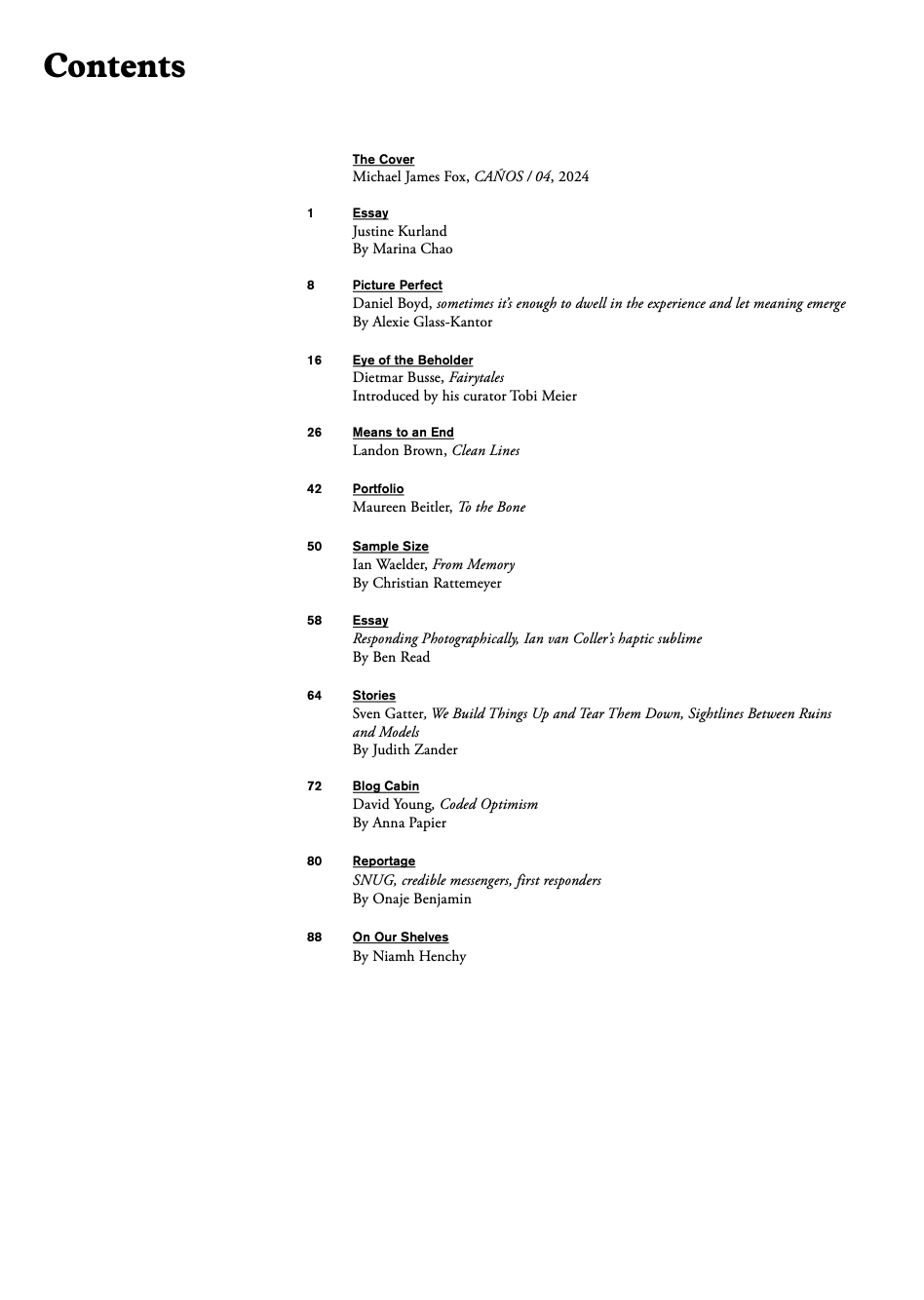OSMOS Magazine Issue 28
OSMOS Magazine Issue 28
Spring 2025
This edition features Kenta Murakami’s essayistic read of photographic artist Yair Oelbaum’s polaroid prints made with his father’s camera, which depict highly emotive, yet muted, abstractions of dust reflecting against itself.
Curator James Voorhies provides an expanded view at Rachel Feinstein’s “The Miami Years,” part of a series of exhibitions organized by Voorhies around the internationalism of Miami. Situating Feinstein’s oeuvre in the context of the artist’s formative years, Voorhies creates a viewpoint of the which spans centuries and borders, but all find deep ties to the socioeconomic and cultural realties of three decades of her work.
For “Picture Perfect,” Barbara Pollack extrapolates on the background of Facial Recognition, a group exhibition held at Jane Lombard Gallery this year. Pollack interrogates the contemporary exploration of Automated Facial Recognition (AFR) and the long history of portraiture to highlight “lesser-known innovators” on the topics—artists such as LuYang, Lau Wai, Azita Moradkhani, and Kambui Olujimi.
Artist and writer Adam Simon reflects on the expansive forms of Cynthia Hawkins’ almost metaphysical depictions of 4-dimensional maps which cull memories of the early history of painterly abstraction, re-orienting it to an unsettling, endless search for movement at the cross-section of stasis. “And yet this movement is also stillness,” Simon points out. “It is a painted surface, after all, not cinema.”
Marc Glode reads artist Wolfgang Nestler’s early landscape photography, reconnecting it to the New Topographics movement and Rosalind Krauss’ concept of “discursive space,” which, through photography, suggests a view (a specifically-chosen field of vision) and an objective, “neutral” document. Here, the viewer can deduce a number of critical reads and reflections on spatial design and organization.
Hayett Belarbi McCarthy reads into the work of former Arts&Rec resident Micheal James Fox, particularly drawing a line between Fox’s “Canos” photograph series, focused on the nature of his native Colombia, to his desire to “permeate the impenetrable past.”
Roberta Valtorta parses through the metamorphic representations of the body inherent to the photography-based works of Patrick Tosani. Tosani’s self-reflexive implementations of technical photographic processes, such as lighting, make reference to the artist’s training as an architect, particularly in the ways that artist uses space and scale.
Agnes Flora Ferenczi contextualizes the work of Nancy Burson, a pioneering artist in the realm of computer morphing technology. Tracking the artist’s trajectory from her time at Massachusetts Institute of Technology (MIT) in the middle 70s through the 90s and onward, the deeply sociopolitical works of Burson point to modern-day uses of similar technologies in the development of AI-based softwares such as DeepFake and GAN (Generative Adversarial Networks).
Natalia Revko presents the work of Ira Lupu—deeply emotive, almost documentary images marked by the war in Ukraine. Featuring a wide range of experiences undertaken by youthful persons; swimming, lazing in the sun, sharing cigarettes, running in the flora—an eery pathos is built against the juxtaposed army tanks and crops fields in flames—a diaristic account of a complex time to be in the world. These are ‘dreamscapes of living knowledge, offering new meanings.’



